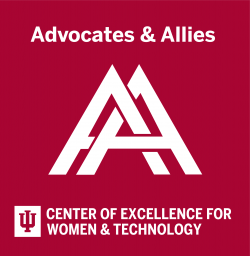In honor of IU celebrating Asian American and Pacific Islander Heritage month in April, we write about the experiences of AAPI people in higher education. We discuss the complicated logic around “AAPI”, anti-Asian racism, and how we can support the AAPI community. For more about AAPIHM and other resources, visit the Asian Culture Center website!

Reflect: Who belongs to the designation AAPI?
The term AAPI is complicated. Originally, AAPI was created as a radical term for political unification and coalition building across communities.1 Though America has a long history of anti-Asian racism and violence,2 this violence is not applied in equal measure and takes different forms for different groups3; this is fueled by the model minority myth being differentially applied to different Asian communities, with East Asian people receiving the most societal power and being visualized as “Asian”.4 Thus, AAPI as a designation is harmful when the unique histories, struggles, and cultures of different communities falling under that umbrella are erased by its totalizing nature. Erasing the numerous disparities between AAPI subgroups - including health, education, and income - by collapsing these communities into a single group can be harmful.5,6 What is gained when we recognize the individual groups underneath the AAPI umbrella? Is there a way to better recognize the unique experiences of these communities?
Learn: Continued Anti-Asian Racism in Higher Education
Although on-going racism, isolation, and pressure to assimilate continues to affect the well-being and sense of belonging of AAPI people on college campuses,7,8 DEI work in higher education often excludes AAPI students, faculty, and staff.9 White students who believe in “model minority” stereotypes are more likely to have a color-blind attitude and believe that racism no longer exists10; however, those who have argued against affirmative action have co-opted a narrative of AAPI “model minority” students as victims of race-conscious admissions to create divisions among racial groups11,12 – despite white women being the primary beneficiaries of affirmative action policies.13 For AAPI women in higher education, these experiences become even more complicated. These experiences are influenced by the intersection of orientalism,14 where Asian culture is treated as exotic and Asian women viewed stereotypically as submissive and demure.15,16 AAPI women graduate students and faculty members are persistently underrepresented in academic jobs,17 particularly in STEM18; among a multitude of factors contributing to this disparity, research has found that colleagues and students who perpetuate submissive stereotypes about AAPI women undermine these faculty by delegitimizing their authority.19,20
Change:
- Discussion questions: What would it look like to be more intentional with our demographic characterization of students with Asian and/or Pacific Island decent? How can we be more mindful of the ways that white supremacy weaponizes different racial and ethnic groups against each other? What steps can be taken to address the specific intersections of other identities with AAPI heritage?
- Expand your representation of AAPI voices: As discussed, there is a vast diversity of communities under the label AAPI. To ensure that all these voices are represented, seek out media, research, and other work by and on South(east) Asians21 and Pacific Islanders.22 This is particularly important as we recognize issues that face these specific subcommunities, such as the increasingly devastating environmental impacts of climate change on the Pacific Islands23 or issues facing Southeastern Asian refugees.24 Our diversified representation should also include the voices of people who have other, intersecting identities like gender, ability, religion, and social class.
- Address “Yellow Peril” Stereotypes: An unfortunate outcome of the rhetoric of the pandemic is an uptick in xenophobic beliefs known as “Yellow Peril” - a biased, fearmongering belief that China and other Asian nations are attempting to undermine the United States. This belief is based in white supremacy, anti-Asian racism, sinophobia, and orientalism. This belief fuels rhetoric that scapegoats Asian people (like calling COVID the “Chinese virus”),25 behavior such as increased violence against Asian people,26 and lackluster support for Asian people in legislation (as seen in the rhetoric of the recent TikTok hearing).27 We can begin to address these beliefs by immediately responding to rhetoric that dehumanizes AAPI people, including the rhetoric that idealizes AAPI to their detriment (e.g., model minority stereotypes). It’s important that we not only address both the immediate harm in someone’s language (e.g., why calling COVID the Chinese virus is bad) but also the logic behind this language.
Weekly Resource Recommendations
- Book: “Strangers” of the Academy: Asian Women Scholars in Higher Education – this edited volume examines the multi-faceted experience of Asian women in higher education.
- Video: AAPI Women Mentoring Experiences in Higher Education – LynnAnn Brewer overviews research about mentorship as a pathway to increase AAPI women representation in leadership.
- Article: How Anti-Asian Racism Has Manifested at Work in the Pandemic – Kim and Shang discuss the ways Anti-Asian racism in the workplace was affected by the pandemic.
- Podcast: Dr. Leslie Wang Combines Scholarship and Her Roots (This Prof Life) – This episode focuses on the work and experiences of Dr. Leslie Wang, as an Asian woman scholar.
Get these tips delivered to your mailbox!
We send these tips every Tuesday during the fall & spring semesters to our mailing list. If you are not already on our mailing list you can request to be added by completing the form below.

